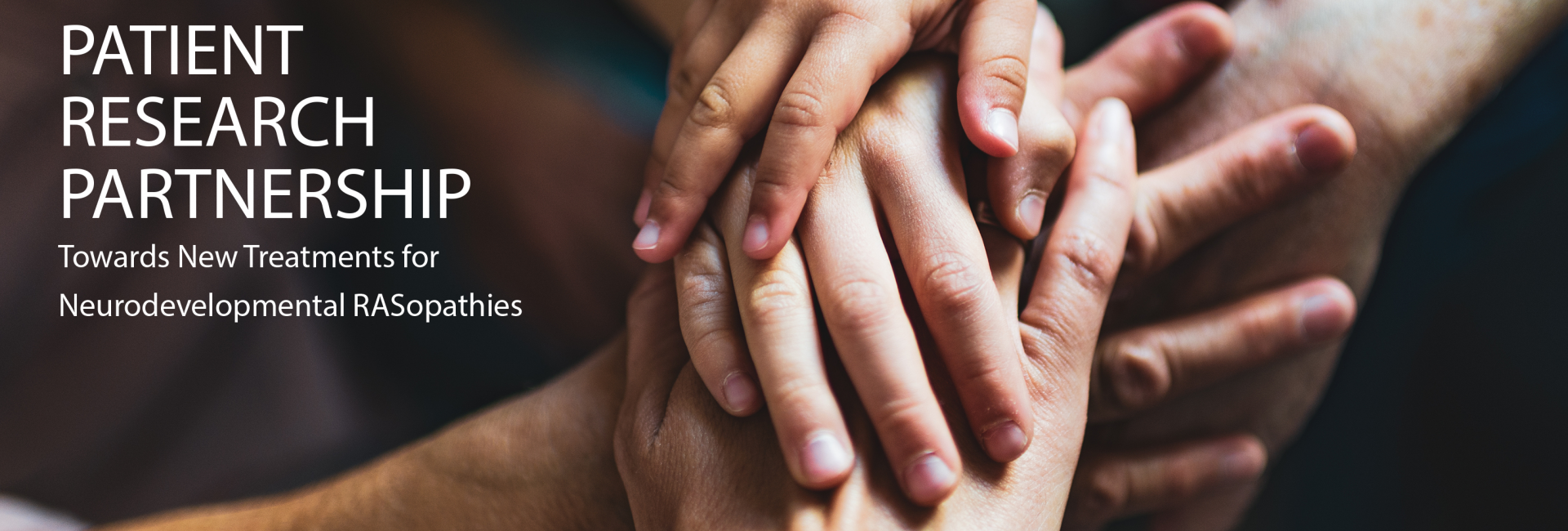Approach
RASopathies are a group of genetic diseases that arise from increased signalling down the cellular transduction pathway known as RAS. This pathway plays a crucial role in multiple developmental processes. RASopathies can manifest themselves in a wide range of symptoms, such as growth delay, cardiac defects, skin and musculoskeletal irregularities as well as variable degrees of neurocognitive impairments. While physical manifestations of the diseases can be reasonably managed through multidisciplinary symptomatic treatments, there is a lack of therapies targeting specifically the neurocognitive symptoms. These are prominent in RASopathies called SYNGAP1 encephalopathy, cardio-facio-cutaneous syndrome and Costello syndrome. Within EURAS, 16 partners from 8 countries join forces to change the status quo. Initiated by committed parents of affected children, EURAS aims to improve diagnoses and develop novel, less invasive treatments for neurodevelopmental RASopathies.
Patients are at the core of EURAS. Their perspectives inform all project activities. EURAS brings together European patient organisations representing more than 1200 families. Together, they form a transnational network for support, exchange and awareness-raising. By setting up a PATient registry of RASopathies (PATRAS), EURAS will have access to large and, until now, unique datasets from patient cohorts. As data collection on rare diseases is particular challenging, EURAS firmly believes that their foundational work will be of immense benefit for future research on rare diseases.
PATRAS allows EURAS researchers to work on the stratification of patient cohorts, assess disease progression and evaluate treatment effectiveness. The project uses stem cell technology to develop novel disease models that will represent disease variability more accurately. Based on these models, researchers investigate disease mechanisms and test the efficacy of newly identified treatments. Furthermore, EURAS partners develop new technologies for drug screening and for non-invasive delivery of therapeutic drugs to the brain. Finally, they will also conduct preclinical proof-of-concept trials with repurposed drugs, antisense oligonucleotides and motor-cognitive training.

